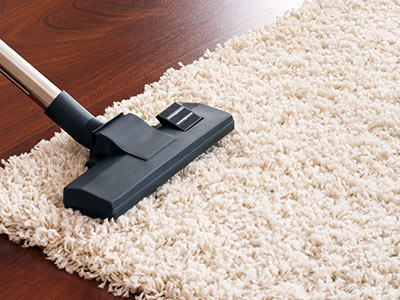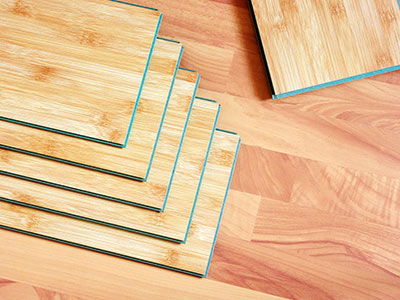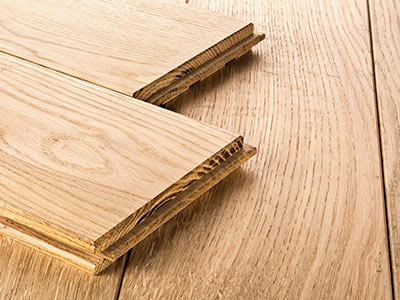Back to Flooring Products
Best Flooring Options for Allergy Sufferers
Allergens are all around us and asthma and allergy sufferers know that very well. Being outside and surrounded by those allergy triggers is bad enough, but it is even worse when you are reminded of your asthma and allergy struggles right in the comfort of your own home. Worry not, because something as simple as changing a few things around your home could significantly improve your condition and make you feel better and help you avoid triggers.
Very often the allergens are hiding in plain sight and right in your own home. Despite the fact that if you or someone in your household is struggling with asthma and allergies, most surely some major steps will be taken in order to create a better breathing environment and ensure a better quality of indoor air, sometimes it is easy to overlook what is right there underfoot and forget that each and every element of your home’s interior can play a crucial role for your well-being.
Many people do not realise it, however, flooring is one of your interior's elements that plays a key role when it comes to the indoor air quality of your home. With the current lockdown situation around the world when we are spending more and more time indoors, especially during the winter months, it is about the perfect time to shed more light on this important topic and help you make the right choice of flooring that will ensure you are enjoying better indoor air quality and breathing environment.
Worst Flooring For Allergy Sufferers
 In order to find out what is the best flooring choice for you as an asthma or allergy sufferer, let's first find out what is the worst flooring choice. Now, if you are struggling with asthma or allergies, think of what you want to avoid at all costs, think of what triggers your issues. It is widely known that the good old fibrous and moisture-trapping carpet is the favourite place for allergens and bacteria to hide and live their happy lives. This pretty much means that having a carpet is the worst option for you.
In order to find out what is the best flooring choice for you as an asthma or allergy sufferer, let's first find out what is the worst flooring choice. Now, if you are struggling with asthma or allergies, think of what you want to avoid at all costs, think of what triggers your issues. It is widely known that the good old fibrous and moisture-trapping carpet is the favourite place for allergens and bacteria to hide and live their happy lives. This pretty much means that having a carpet is the worst option for you.
No matter how clean your carpet is, no matter how often you deep clean it and how you maintain it in perfect condition, it is just the structure of carpet flooring that makes it so easy and effortless for allergens and bacteria to hide between the fibres. Carpets are the real hotbed for a multitude of little triggers such as dust mites, dust, mould, mildew, pollen, grass, pet dander, dirt, grime, and pretty much everything else that enters your home attached to your shoes and find its way to you. Chances are, you are allergic to at least one of these nasty little friends so you want to avoid hosting them in your home at any cost. Even more, the fibres of your carpet can also detach and find their way into your air space, which will cause irritations and trigger your allergy too.
 Now, consider laminate and vinyl flooring. These sound better than carpeting, right? Unlike carpets, laminate and vinyl flooring do not have fibres and little allergens do not have a place to hide. The smooth surface of these types of floors are easy to clean, you can vacuum and mop them on a daily basis to ensure to allergens and dust are living in your home. However, when it comes to laminate and vinyl flooring, here we have something else that can easily trigger your asthma or allergy – VOCs.
Now, consider laminate and vinyl flooring. These sound better than carpeting, right? Unlike carpets, laminate and vinyl flooring do not have fibres and little allergens do not have a place to hide. The smooth surface of these types of floors are easy to clean, you can vacuum and mop them on a daily basis to ensure to allergens and dust are living in your home. However, when it comes to laminate and vinyl flooring, here we have something else that can easily trigger your asthma or allergy – VOCs.
VOCs are chemicals that are used for treating and manufacturing synthetic floors such as laminate and vinyl flooring. VOCs can be found anywhere on a synthetic floor, from the structure and synthetic materials themselves to the adhesive used for the installation of the floor. Owning a synthetic floor puts you at high risk of off-gassing, which is pretty much the process of VOCs being emitted in a gas form into the air you breathe and there is nothing you can do in order to stop this process. Well, nothing besides choosing another type of flooring, right?
Now, if synthetic floors are bad for your health, let’s think of floors made out of natural materials. What about stone or ceramic tile flooring? Well, these sound a lot better right? But do they really? Stone and ceramic tile floors are often treated with sealants and installed with modified mortar and grout that usually contains latex and other additives. You guessed it right, stone and ceramic tile floors may be natural, however, they are treated with products that contain VOCs too.
So, what is the only option left for you? What about hardwood flooring?
Best Flooring For Allergy Sufferers
 Hardwood flooring is considered to be the best choice for people struggling with asthma and allergies. Besides the bunch of advantages wood flooring comes with, they also have the added benefit of not harbouring allergens and other harmful microorganisms.
Hardwood flooring is considered to be the best choice for people struggling with asthma and allergies. Besides the bunch of advantages wood flooring comes with, they also have the added benefit of not harbouring allergens and other harmful microorganisms.
Real wood floors are naturally hygienic and they are not a hotbed for dirt, dust, allergens, and bacteria. In homes with real wood floors, dust, mould, and animal dander contamination is minimal. To make things even better, hardwood floors are easy to clean and maintain free of dust and grime.
A regular cleaning routine consisting of vacuuming and dusting with a dry or slightly damp mop is more than enough to keep your floor and home free of dust and dirt. For more stubborn dirt build-ups all you need to do is a cleaning product designed for hardwood flooring.